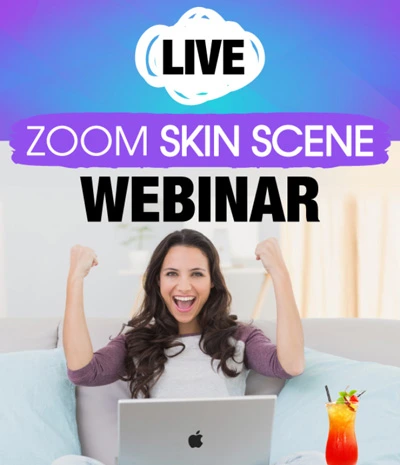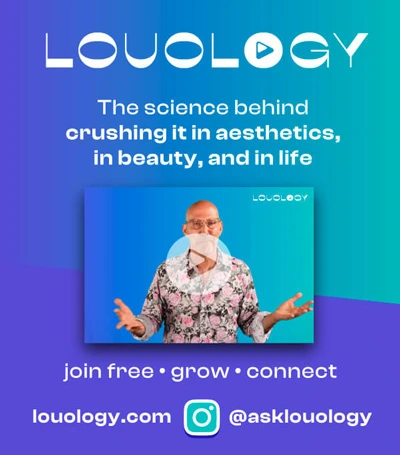Tackling Teenage Acne
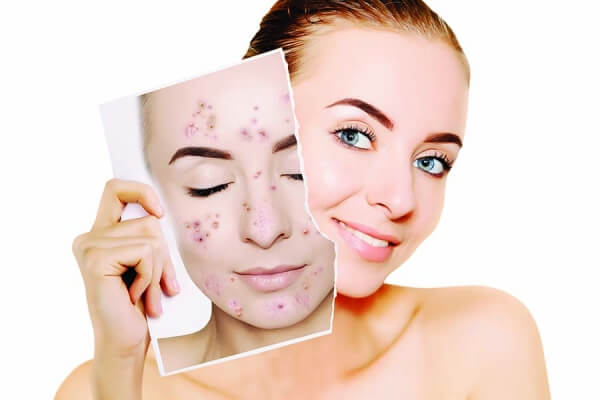
In a world where personal images are so easily accessible, dealing with teenage acne can be especially challenging. Many are familiar with a recent incident involving gorgeous model Kendall Jenner, who, sporting a few pimples on the red carpet, received some fairly heartbreaking backlash regarding her complexion on social media – almost as if she had done something wrong. Professionals know that acne is no laughing matter and that there are many clients who suffer from the condition who can relate to Jenner’s experience.
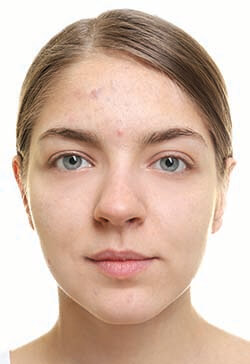
Why do some teenagers get acne?
Why do some teenagers struggle with acne, while others rarely, if ever, get it? It is difficult to say, even though an estimated 85 percent of teens will deal with some form of whiteheads, blackheads, clogged pores, and excess oil on their faces, upper bodies, or backs. While genetics, hormones, diet, topical products, sun damage, hygiene, and lifestyle all play a role, the good news is that there are now a number of ways to effectively treat it. Treatments have come a long way since the days of drying out the skin and taking antibiotics, or worse, the use of ultraviolet light. Not only have professionals learned that long-term use of antibiotics can be harmful to the immune system, they have also learned that drying out oily skin throws off pH balance, making skin even oilier. Studies have also shown that some powerful prescription drugs used to treat severe nodular or cystic acne carry their own set of side effects including shedding dry skin, sensitivity to sun, and, when taken by pregnant women, birth defects – resulting in clients committing to two forms of birth control, monthly blood analysis, and mental health checks.
What causes acne?
While a number of factors are involved, basically, acne is caused by overactive oil glands, which are affected by an increase in androgens. When there is excess sebum, pores and hair follicles get blocked, and there is also an overgrowth of bacteria. So, if oil production can be reduced and excess bacteria cleared, acne should dissipate.
Emotional impact of acne
Acne has always been a source of embarrassment and frustration for those struggling with it. It can greatly impact self-esteem, making people feel depressed, anxious, and wanting to withdraw from social situations. And, with social media, another element has been added –cyberbullying. Teenagers post selfies constantly, and one little blemish can easily be a target for internet bullies – let alone a case of full-blown acne. And, while there are a number of photo-editing apps and filters for nearly every complexion woe, they do not take away the sting of dealing with pimples in real life.
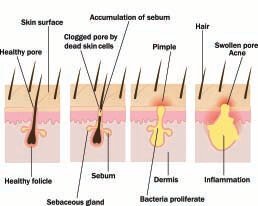 How can acne be treated?
How can acne be treated?
Angela Setliff Dolan, medical aesthetics and cosmetic laser instructor technician at National Laser Institute, offers suggestions on treating teenage acne. With four teenagers of her own, she says it is important to consider a teenager’s current skin care regimen and what has already been done, if anything, to treat acneic skin. “Even though they are growing up right in front of our eyes,” Dolan says, “they are still our precious babies forever, and we do not want to do anything that will harm them or their skin. Starting, first, with more gentle treatments is very important.”
While exfoliation is key to keeping pores clear, it is best to start with minimally invasive products and treatments and work upwards. For example, retinoids can be very effective in treating teenage acne, but a 1 percent solution or higher may be too much for young skin. Even if a client has gotten some relief from a topical antibiotic cream, they will still benefit from using professional-grade products, particularly those that contain lactic acid for mild exfoliation, salicylic acid for killing bacteria, and kojic acid to reduce pigmentation.
“I always tell my clients that using professional-grade products – meaning, those that must be purchased at places like doctors’ offices and medical spas – will make an incredible difference in their skin. “Drug store brands should be thought of as fluff products,” Dolan says. “They smell pretty and they feel good, however, they sit on the skin rather than being absorbed and performing a function.”
Clinical products, on the other hand, have studies that back their products but are not nearly as effective as professional-grade, which are backed by scientifically-proven results. Medical grade products tend to cost more but because they are concentrated, smaller amounts are typically needed and results are more dramatic. Using these types of products will give clients a “mini-treatment” at home each time they are used, complementing the results received in a spa or physician’s office.

Portrait of young beautiful happy smiling young blond girl cleaning her face with foam over white background
Cleansers and spot treatments
It all starts with cleansing the skin thoroughly. Dolan always asks clients who wear makeup if they are first removing all of their makeup at night. Pulling the hair back away from the face so that oils are not sitting on the skin and investing in a good cleanser that will also gently exfoliate are key steps that aid in cleansing. Washing the face and neck, twice if necessary, (the first time to remove all traces of makeup; the second time to really get the skin clean and prepare it for spot treatments) is also important. Dolan recommends a product with glycolic acid, salicylic acid, and microbeads to slough off the top layer of dead skin, and olive leaf extract to both soothe and hydrate. Finishing with a pH balancing or soothing toner – even something as simple and inexpensive as witch hazel – can help balance and further cleanse the skin.
Spot treatments typically contain drying and antibacterial ingredients that work especially well when applied at night, before bedtime, such as benzoyl peroxide, salicylic acid, tea tree oil, lavender essential oil, and niacinamide. A little bit goes a long way, though, so clients should stick to applying these types of products on affected areas rather than slathering them on everywhere.

Happy young girl face mask smiling cosmetics cleaning cream
Masks, peels, and complimentary treatments
Masks, particularly those with salicylic acid and low percentages of retinol, can be very effective in treating teenage acne. Most masks that focus on acne aim to purify and detoxify with ingredients such as glycolic acid, lactic acid, tea tree oil, and clay, which is excellent for pulling impurities to the surface. There are also kits available that contain several products that act in a complementary way to each other. While it may seem counterintuitive to hydrate skin that is already oily, the right type (oil-free, sheer, or clean ingredients) can actually balance skin’s pH level. Some sheer moisturizers also contain growth factors that can help with acne scarring and leave skin glowing and plump. Growth factors can also improve the look of severe burns and scarring and aid in the healing process of post-procedure skin.
The best time to apply masks is at night, after thoroughly cleansing skin, and they should be left on for about 20 minutes. For more severe cases of acne, they can be slept in overnight. Dolan’s son played football and had very oil skin. He applied a salicylic mask at night and kept it on until the morning.
“Doing this played a huge role in helping eliminate breakouts for him and also balancing his oily skin,” Dolan says. “But I remind parents that they know their child better than anyone, so they should talk to a skin care professional about what would be the best type of mask for their child. That is one of the many benefits of using medical grade products. A professional can guide them in the right direction, rather than a parent or teenager just picking something random off the shelf. However, if they know their son or daughter is sensitive to, say, pineapple or papaya, and someone recommends a mask containing those ingredients, parents should go with their gut instinct and find something else. There are so many options now.”
While masks can be highly beneficial, one of Dolan’s daughters benefited more from doing regular chemical peels.
“For her,” Dolan says, “it was more about getting rid of old skin and encouraging fresh, new skin. Out with the old and in with the new, I always say. Peels really helped my daughter prevent, correct, and preserve the clear skin she was achieving.”
One of the added benefits of chemical peels is that they cannot only clear up bacteria, but pigmented spots, as well, while improving tone and texture, especially when done once every four weeks. Clients should typically anticipate three or four days of beautiful, glowing skin, and then begin peeling for about five to seven days – depending on the type of peel and whether any types of peeling boosters were used. Once the top layer of dead skin is off, clients can return for a number of additional treatments that work very well in conjunction will peels, including microdermabrasion, dermaplaning, hybrid* fractional lasers, or fractional skin resurfacing for acne scars, wrinkles, and other skin conditions.
“Everyone wants that glow,” Dolan says, “and these treatments do such a wonderful job of getting that last bit of dead skin off.”
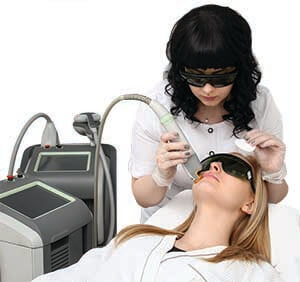
Laser hair removal in the beauty salon. Woman having facial hair removal. Laser hair removal equipment in the background.
Deeper treatments for acne scars
If the client has what is known as ice pick scars (scars that are narrow but quite deep; formed when cystic acne becomes infected) or boxcar pockmarks (scars with steep, defined edges that resemble chicken pock scars), then treatments need to be more aggressive, such as CO2 fractional laser resurfacing – in which columns of skin are removed, leaving surrounding skin to aid in the healing process – and certain types of fractional lasers that ablate micro channels into the skin, creating plasma and aiding in the healing process. The downtime for some fractional laser treatments typically involves three to five days of redness, weepy skin with a slight discharge, and swelling – though swelling clears fairly quickly. Internally, however, skin heals and creates collagen for up to six months post-treatment. Four to six weeks following treatment, another treatment could also be given as a finishing treatment for the ultimate glow.
While acne will always be something that some teenagers must deal with, the good news is, with the right combination of products, treatments, and knowledge, it does not have to be something that forces a teenager to feel bad about his or herself.




